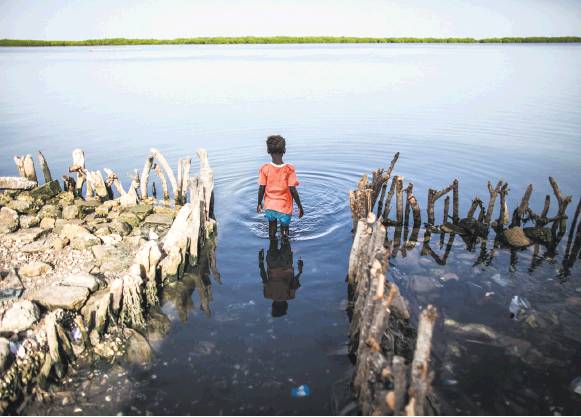Global warming warning turns out to be prophetic
By Seth Borenstein and Nicky Forster
SALIDA, Colo. — We were warned.
On June 23, 1988, a sultry day in Washington, James Hansen told Congress and the world that global warming wasn’t approaching — it already had arrived. The testimony of the top NASA scientist, said Rice University historian Douglas Brinkley, was “the opening salvo of the age of climate change.”
Thirty years later, it’s clear that Hansen and other doomsayers were right. But the change has been so sweeping that it is easy to lose sight of effects large and small — some obvious, others less conspicuous.
Earth is noticeably hotter, the weather stormier and more extreme. Polar regions have lost billions of tons of ice; sea levels have been raised by trillions of gallons of water. Far more wildfires rage.
Over 30 years — the time period climate scientists often use in their studies in order to minimize natural weather variations — the world’s annual temperature has warmed nearly 1 degree (0.54 degrees Celsius), according to the National Oceanic and Atmospheric Administration. And the temperature in the United States has gone up even more — nearly 1.6 degrees.
“The biggest change over the last 30 years, which is most of my life, is that we’re no longer thinking just about the future,” said Kathie Dello, a climate scientist at Oregon State University. “Climate change is here, it’s now, and it’s hitting us hard from all sides.”
Warming hasn’t been just global, it’s been all too local. According to an Associated Press statistical analysis of 30 years of weather, ice, fire, ocean, biological and other data, every single one of the 344 climate divisions in the Lower 48 states — NOAA groupings of counties with similar weather — has warmed significantly, as has each of 188 cities examined.
South central Colorado, the climate division just outside Salida, has warmed 2.3 degrees on average since 1988, among the warmest divisions in the contiguous United States.
When she was a little girl 30 years ago, winery marketing chief Jessica Shook used to cross country ski from her Salida doorstep in winter. It was that cold and there was that much snow. Now, she has to drive about 50 miles for snow that’s not on mountain tops, she said.
“T-shirt weather in January, that never used to happen when I was a child,” Shook said. When Buel Mattix bought his heating and cooling system company 15 years ago in Salida, he had maybe four air conditioning jobs a year. Now he’s got a waiting list of 10 to 15 air conditioning jobs long and may not get to all of them.
And then there’s the effect on wildfires, which now consume more than twice the acreage in the United States than they did 30 years ago.
The AP interviewed more than 50 scientists who confirmed the depth and spread of warming.
Since the 1800s scientists have demonstrated that certain gases in Earth’s atmosphere trap heat from the sun like a blanket. Human activities such as burning of coal, oil and gasoline are releasing more of those gases into the atmosphere, especially carbon dioxide. U.S. and international science reports say more than 90 percent of the warming that has happened since 1950 is man-made.
Overall, NASA satellites have shown three inches of sea level rise in just the past 25 years.
With more than 70 percent of the Earth covered by oceans, a 3-inch increase means about 6,500 cubic miles of extra water. That’s enough to cover the entire United States with water about 9 feet deep.
It’s a fitting metaphor for climate change, say scientists: We’re in deep, and getting deeper.
“Thirty years ago, we may have seen this coming as a train in the distance,” NOAA’s Arndt said. “The train is in our living room now.”
Seth Borenstein and Nicky Forster are Associated Press writers.
